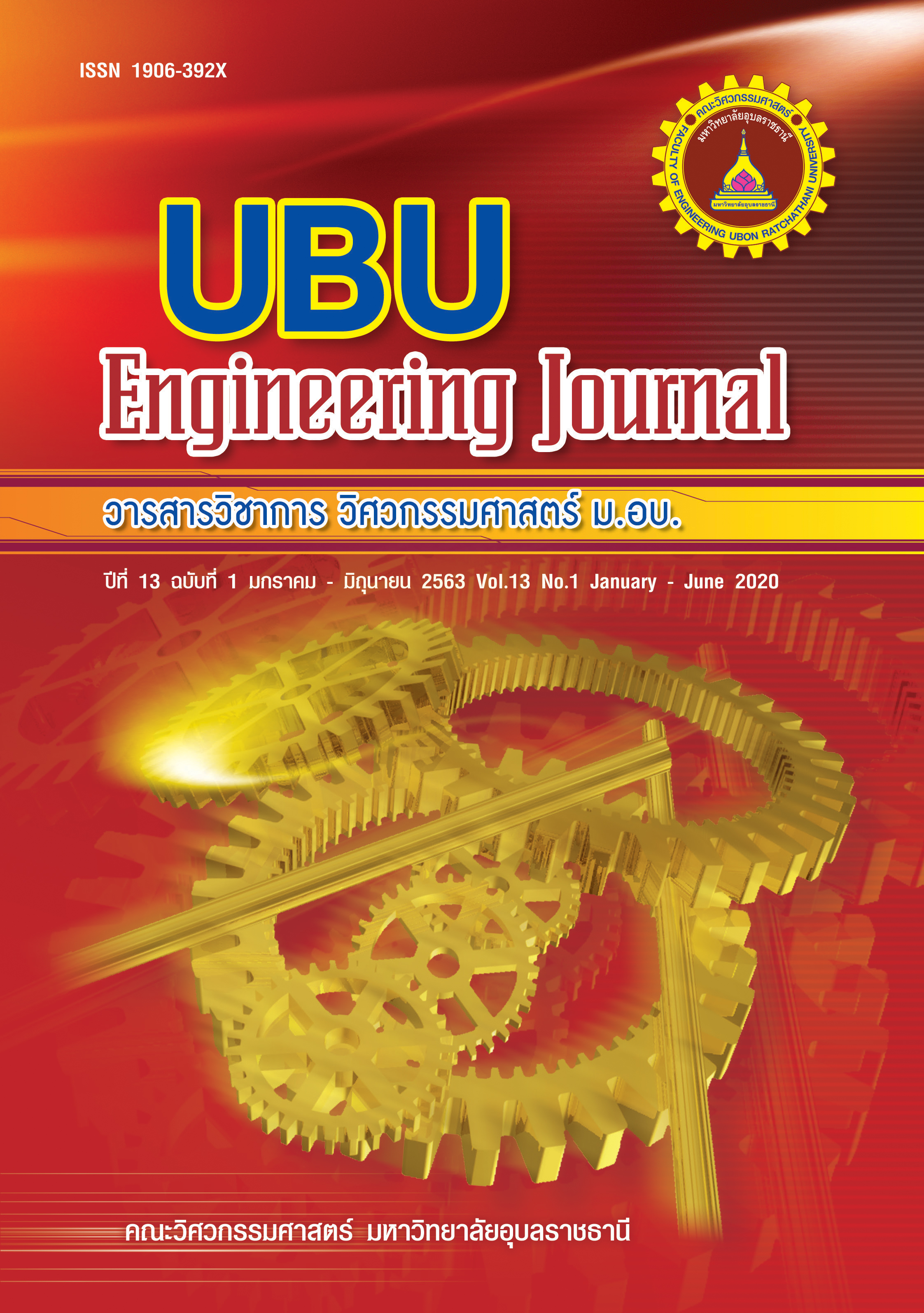Prediction of GHG Emissions in Paddy Fields by Application of Vegetation Indices
Main Article Content
Abstract
The main aim of this research is to inconsistent study methane emissions occurring in the paddy fields starting from cultivation to harvesting and to use vegetation indices to predict the methane emissions. The results showed that the vegetation indices: the Normalized Difference Vegetation Index (NDVI), the Soil Adjusted Vegetation Index (SAVI), the Green Normalized Difference Vegetation Index (GNDVI), and the Infrared Percentage Vegetation Index (IPVI) were in correlation with methane emissions in the same direction as in the paddy fields. The correlations coefficients of Pearson between methane emissions and vegetation Indices (NDVI, GNDVI, SAVI, and IPVI) are at high values of 0.777, 0.835, 0.756, and 0.756, respectively. Therefore, these vegetation indices are suitable to be applied in the quadratic predicted equation. The most suitable predicted equation is from the GNDVI index which the predicted equation is Y = -83.671X2 + 80.359X–16.993. This predicted equation showed the highest accuracy in predicting methane emissions with R2 of 0.857.
Article Details
References
[2] Orawan Siriratpiriya and Arubol Chotipong. Impact of Global Change from Greenhouse Gases on Rice Cultivation. Environmental Research Institute. Chulalongkorn University, 1998
[3] Office of agricultural economics. Development of greenhouse gas emission database from agricultural. The Joint Graduate School of Energy and Environment. King Mongkut's University of Technology Thonburi. Final report; September 2012
[4] U.S. Department of the Interior. Mapping, Remote Sensing, and Geospatial Data. https://www.usgs. gov. 25 October 2018
[5] Campbell and James B. Introduction to remote sensing. London, Taylor & Francis, Edition 3rd. 2002
[6] Thomas Lillesand, Ralph W. Kiefer, Jonathan Chipman. Remote Sensing and Image Interpretation. New York: Wiley, Edition 7th. 2015
[7] Komkrit Keereerom. Estimating Methane Emission by Using Vegetation Indices from LANDSAT-5 TM : A Case Study of Amphoe Bang Num Priao, Area, Chacheongsao Province. M.Sc. (Environmental Management). National Institute of Development Administration. 2011
[8] National institute for agro environmental sciences. Guidelines for measuring CH4 and N2O emission from rice paddies by a manually operated closed chamber method version 1, Japan, August 2015.
[9] Kun Silprasit. Relationship between Rice Plant Physiology and Methane Transmitting in Paddy Field. Pathumwan Academic Journal, Vol. 2, No. 5, September - December 2012, pp. 45 – 53, 2012
[10] Sass, R.L., Fisher, F.M., Wang, Y.B., Tuner, F.T. and Jund, M.F. Methane emission from rice fields: The effect of flood water management. Global Biogeochemical Cycles. Vol. 6, No.3, pp. 249-262, 1992
[11] Somsiri Sawatchalerm. Second Rice Yield Estimation from Spectral Reflectance: A Case Study of Changwat Suphanburi. M.Sc. (Geo-graphy). Bangkok: Graduate School, Srinakhar-rinwirot University. 2007

